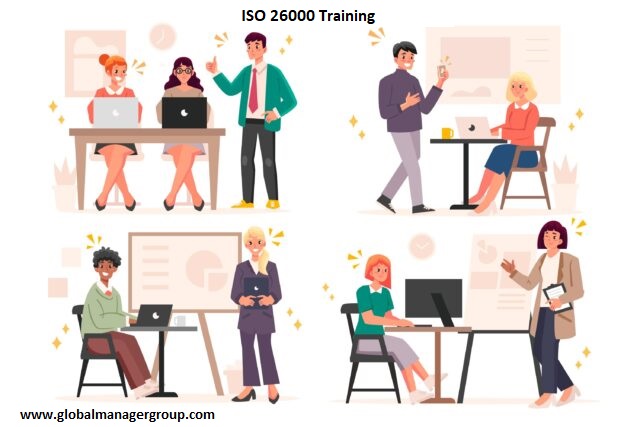
An international standard called ISO 26000 tries to offer recommendations on how businesses should practice social responsibility. It addresses a wide range of topics, including environmental responsibility and labour rights.
The standard is intended for businesses that seek to integrate social responsibility practices into their supply chain and internal operations.
The International Organization for Standardization (ISO) is the publisher of ISO 26000: Guidance on Social Responsibility.
According to its definition, social responsibility is "the obligation of an organization to account for the effects of its decisions and actions on society and the environment via openness and moral conduct that:
- Contributes to societal well-being and sustainable development, including
- Reflects an awareness of stakeholder expectations
- Complies with current laws and behaviour standards around the world
- Is used in relationships and is incorporated throughout the organization."
Steps for Implementing a Social Responsibility Policy Following ISO 26000 Guidance
Depending on the strategy and goals established by businesses, there may be several ways to execute a social responsibility policy utilising ISO 26000 guidelines.
However, the 8 phases listed below give a rough logical sense of how the procedure works:
1. Completely Comprehend the ISO 26000 Framework and Standard
To guarantee that socially responsible behaviours are adopted throughout the organization and integrated into day-to-day operations, businesses can use the various online resources at their command to train managers and staff.
2. Perform a Landscape Analysis and Situational Diagnosis
Organizations will
- Investigate their definition of social accountability.
- Identify important difficulties by evaluating their scenario for each of the seven ISO 26000 core subjects.
- Describe the significance of each essential topic for the company's operations, as well as their long-term goals and plan.
3. Identify the Pertinent Problems
There are 37 concerns in all among the 7 core topics. The 37 specific difficulties won't all apply to every company. The standard offers relevant recommendations and implementation tactics for each problem so that businesses may assess their existing situation and set achievable targets for change.
4. Find and Involve the Stakeholders
ISO 26000 defines stakeholders as individuals or groups with an interest in an organization's decision or activity. Companies should engage stakeholders in two-way discussions about collaboration. Prioritizing core subjects and related stakeholders is crucial, and focusing on areas where companies and stakeholders can work realistically within each entity's resources.
5. Planned Enhancement
Companies will: based on the present picture diagnosis
- Determine the causes of the flaws that exist now.
- Identify the time, money, partners, and other resources that are required to overcome the vulnerabilities.
- Create a timetable and action plan to close the gaps.
- Always evaluate the effects of the changes you are considering.
6. Reporting to the Public
The standard encourages users to provide affected stakeholders with reports on their social responsibility performance at reasonable intervals.
According to the standard, the report should contain the following information:
- A truthful and accurate account of the current situation
- Details on goals, performance, and pertinent social responsibility topics and key concerns
- Disclosure of how and when stakeholders were involved in the reporting
- A true and thorough account of performance, detailing both successes and shortcomings as well as how the latter will be addressed
7. Be Open and Honest while Discussing Social Responsibility
as a part of an ongoing conversation between businesses and their ecosystem.
8. A Credit Claims
The International Organization for Standardization is very sensitive to any use of the word "ISO 26000" which could imply that an organization or company has been, or has to be, certified per the standard. This is because ISO 26000 is not intended for validation purposes.
About Global Manager Group
The ISO 26000 training kit for social responsibility system by Global Manager Group is based on the ISO 26000 standard as well as SA8000 standard's social accountability requirements and includes a collection of more than 120 editable files. Social Accountability according to ISO 26000 a training kit's documentation is made to take the least amount of time and money.


































